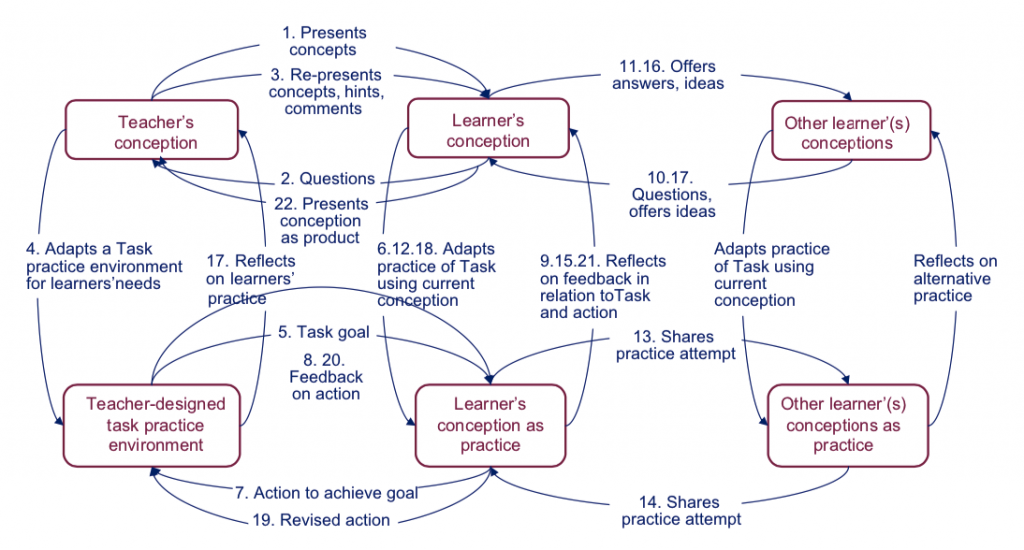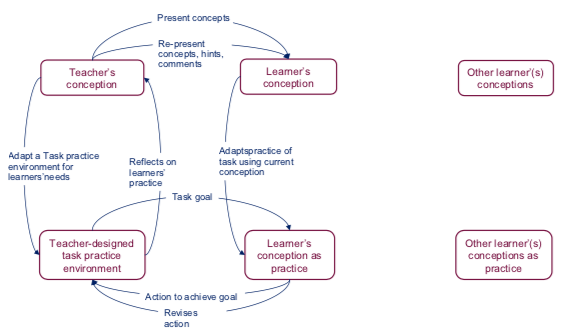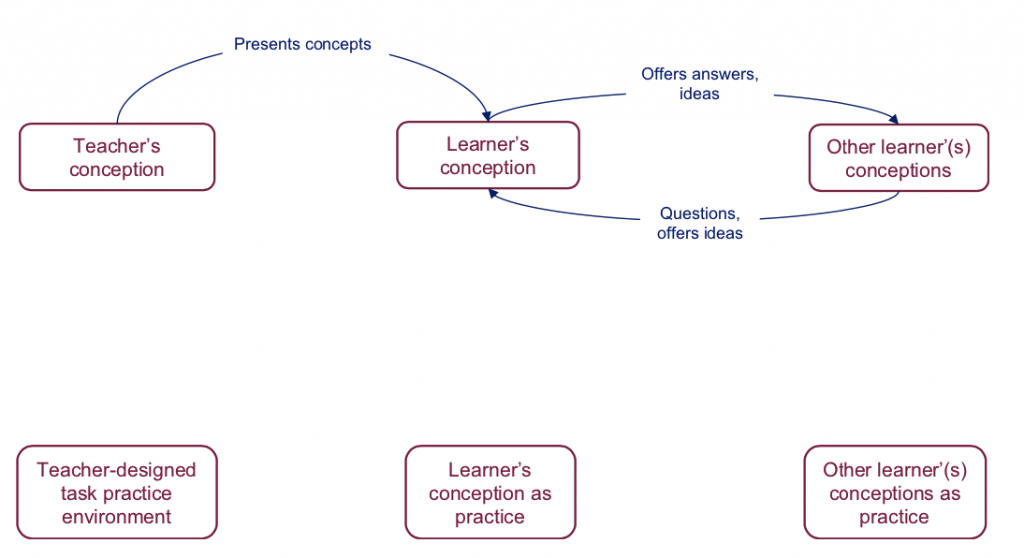A Framework for Understanding How Pedagogical Toolsets Shape Learning
There are many different ways that we teach and learn. Most faculty pursue multiple modalities of instruction over the course of the semester, or even class meeting. To understand what kind of learning environment we are creating we must first start with our own actions as teachers. It is only when we deconstruct various teaching strategies that we can understand how these approaches are constrained by different technologies and learning spaces. In 2003, Diana Laurillard published Rethinking University Teaching (Routledge, 2002) in which she developed her “conversational framework” that describes the various ways in which students, teachers, and peers interact to construct effective learning experiences.
This framework is designed to be used to analyze tools and strategies for effective teaching. However, it can also be used to deconstruct and understand different approaches to teaching in the classroom. In a later article, Laurillard defines four instructional modes: Instructionism, Constructionism, Socio-Cultural Learning, and Collaborative Learning. I have adapted her typology here as a mechanism for analyzing pedagogical practices and, ultimately, our analysis of tools. (Typology and images from Laurillard, Diana, “The Pedagogical Challenges to Collaborative Technologies,” Computer-Supported Collaborative Learning, 2009/4, pp. 7-8)
Instructionism – The organization of instruction is the most important factor in the Instructionalist approach to teaching and learning. It prioritizes the presentation of material, its testing, and predictable outcomes measurement. Instruction is then adapted based on those predictable outcome measures. The focus in this pedagogical method is on the instructor’s ability to present material and test based on said material and typically technology will be instructor-focused in that context.
(Toolset Value = TVi)
Constructionism – Seymour Papert and Idit Harel (1991) coined the term “constructionism” to mean internal self-directed construction of knowledge patterns. This is a learner-focused, often self-directed exploration of learning. The main role of the instructor is to provide the task, provide the necessary technology, and facilitate corrections along the way. This approach to teaching and learning is very hands-on and student-driven and requires technologies that support that approach.
(Toolset Value = TVc)
Socio-Cultural Learning – Socio-cultural learning is derived from the concept that learning is a process of conversations, particularly with peers who help each other overcome conceptual challenges. L.S. Vygotsky (1978) developed the idea of the Zone of Proximal Development to illustrate the scaffolding of challenges that teachers provide to students as they collectively work their way through the learning journey. Socio-cultural learning is extremely dependent on communications toolsets, particularly those which facilitate group discussions.
(Toolset Value = TVsc)
Collaborative Learning – combines many of the elements of the preceding two approaches to teaching and learning. It is still very much a student-centered approach to learning but it instead theorizes that it is through a combination of peer group learning and practical challenges that learning can be accelerated. It therefore requires toolsets that support both self-constructed learning and easy communication among the students.
(Toolset Value = TVcl)





